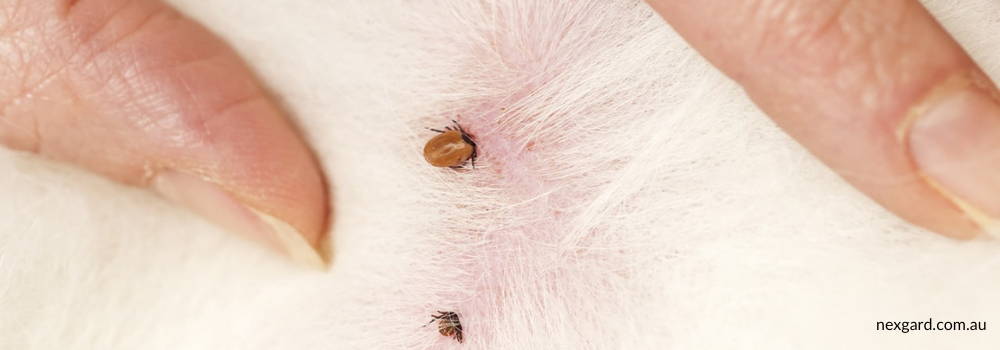What Does a Tick Bite Look Like?
Ticks are blood-sucking bugs that can be the same size as a pin’s head or as big as a pencil eraser when fully fed. They have eight legs and belong to the same family of spiders, arachnids.
There are different types of ticks and the various types vary in colours ranging from brown to reddish-brown and sometimes black. They grow bigger as they gorge in more blood and can even grow as big as a marble. When fully engorged after feeding for days, their colour turns into greenish-blue.
Ticks usually prefer biting in warm and moist parts of the body. Once they reach their desired spots, they will immediately start feeding.
Unlike other bug bites, ticks attach to the body as they bite you. When you get bitten by a tick, you will most likely find it attached to your skin, but you will not notice getting bitten right away.
Because of the anesthetic that they inject into the skin, it keeps them from being detected and allows them to feed continuously. After a couple of days and they have doubled or tripled in size, they will detach and fall off.
It is likely for you to wait for any signs and symptoms before noticing a bite since you will notice getting bitten right away. However, you should not ignore the bitten areas especially when you got bitten by ticks after coming from any outdoor activities.
You will never know if the tick that bit you have transmitted any disease. Among the common diseases transmittable by ticks is Lyme disease and may put your health at risk.
What Does a Tick Bite Look Like on a Dog?
Because of its size, it may be difficult to detect ticks on your dog especially for breeds with thick hair. Since they love hiding in moist and warm places, they will most likely be found around the neck, ears, feet, or head of your dog.
Most of the time, they will attach themselves just about anywhere and you will never know where they might be hiding. You can find them in the groin area and even around the bottom end of your dog. They may even be attaching themselves to your dog’s eyelids.
Identifying a tick bite in your dog’s body can be more difficult than finding it on your skin. It may be impossible to find a tick bite alone, but you will notice your dog scratching more often on the bitten areas.
You might want to check the part where your dog is scratching and check for any redness. If fortunate, you may still find the parasite attached to the skin and still feeding. You can look closely and see that the parasite is still embedded in the skin with its blood-filled sac.
Given that ticks transmit diseases, it is more likely for you to feel worried if your dog got ticks after any outdoor activities. They may have possibly brought home disease-carrying ticks and even expose you to these parasites.
You should consider giving them the right treatment to get rid of ticks. Consider cleaning your home thoroughly to get rid of any ticks that may have found a new habitat in your home.
Some products we recommend to kill ticks and even fleas for your pet is
What Does a Tick Bite Look Like on a Human?
Tick bites are commonly harmless and may not show any symptoms. Unless the ticks that bit you were from outdoors or from areas where Lyme diseases are known to spread. However, you may experience symptoms if you are allergic to the bites.
Some symptoms that you may experience if you develop allergic reactions are:
Rashes
Swelling or pain at the bite site
Blisters
Burning sensation
In severe cases, you may have trouble breathing.
Ticks carrying illnesses would have to stay attached to your skin for more than a day to transmit diseases. The main symptom for tick-borne diseases like Lyme disease is the bull eye mark on the bitten area.
Unlike a mosquito bite that you immediately feel, it may take a while for you to notice tick bites. You will not have to worry about infectious diseases if the ticks were not from places known for tick species spreading diseases.
The treatment for bites is antibiotics. However, for those without any allergic reactions, keeping the bitten areas clean and leaving them to heal would be enough.
Most patients with tick-borne illness do not recall being bitten by a bug of any kind. This is the reason why there are people who do not realize they have the disease until they have themselves checked.
Once you notice that you have been bitten by a tick and it is still attached and feeding, you need to carefully remove it to avoid leaving any of its mouthparts in your skin. When removing the tick, you should use a pair of tweezers and carefully remove it.
The same goes when removing the parasites from your dogs. You want to make sure that none of its mouthparts are left in the skin. Also, you should clean it afterwards and leave it to heal.
You can also consult your physician to get a prescription in case the bitten area gets infected. Seeking medical attention is always recommended to have your condition evaluated and get potential treatments needed for your case.
To prevent getting bitten by ticks, wee recommend the products below:


